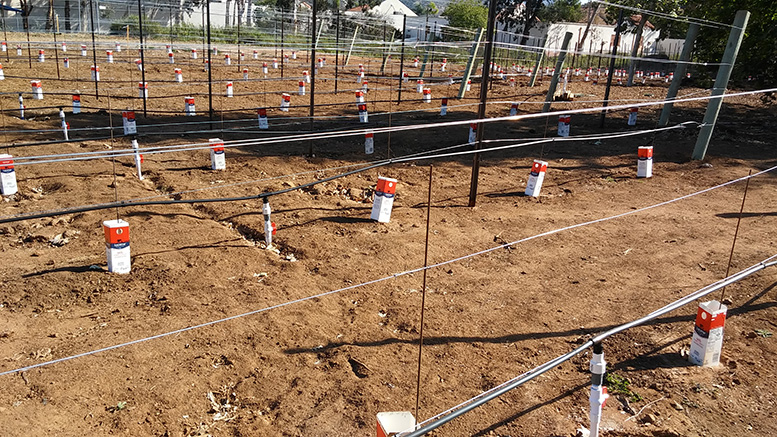A new half-acre vineyard at Cuyamaca College (California) that is part of a groundbreaking viticulture apprenticeship program to meet a growing demand for skilled workers in the region’s wine-making industry will be dedicated on June 4.
The program, the only one of its kind in California when it launched in fall 2016, aims to address a shortage of qualified workers knowledgeable about vineyard management practices, including irrigation, pruning, fertilization and harvest. It was supported through a $260,000 grant from the California Community Colleges system, much of which went to develop the vineyard.
“Cuyamaca College for nearly 40 years has been playing a critical role in building our regional economy, and our new viticulture apprenticeship program will train the kind of skilled workers who are in demand by a rapidly expanding viticulture industry,” said Cuyamaca College President Julianna Barnes.
Graduates of the viticulture technician apprentice program will understand all aspects of wine making, from growing the grapes to production and sales, and be ready to work as vineyard managers, with vineyard management companies or as consultants to boutique and private growers.
Cuyamca collaborated with the San Diego Vintners’ Association, Fallbrook Winery, San Pasqual Winery, Highland Hills Winery and the Division of Apprenticeship Standards to host the viticulture apprenticeship program. The two-year program includes 14.5 units of horticulture classroom instruction and 3,000 hours of hands-on employment at one of the participating wineries and vineyards.
Local workforce demands
A 2015 report by the California Centers of Excellence, a leading source of regional workforce information for the California Community Colleges system, found that 22 percent of small, owner-operated wineries and vineyards had difficulty finding qualified candidates for open positions, thus preventing their business from growing.
The report also concluded that community colleges can support the wine industry by:
- aligning curriculum to technical positions (except cellar workers)
- adding an internship component to the curriculum to provide students with hands-on experience to better prepare them for entry-level employment
- maintaining and developing articulation agreements with enology and viticulture university programs
San Diego County’s wine grape crop was valued at $4.2 million as recently as 2015, according to the county Department of Agriculture, Weights and Measures, with wine grapes being grown on nearly 1,000 acres that year. Vineyard planting in the state began in this region with Spanish Franciscan missionaries, and the direct economic output from locally produced wine is more than $70 million annually.
California, the fourth leading wine producer in the world, crafts 85 percent of the wine consumed in the country, and the state’s wine industry employs more than 41,000 people, excluding seasonal and technical workers.

